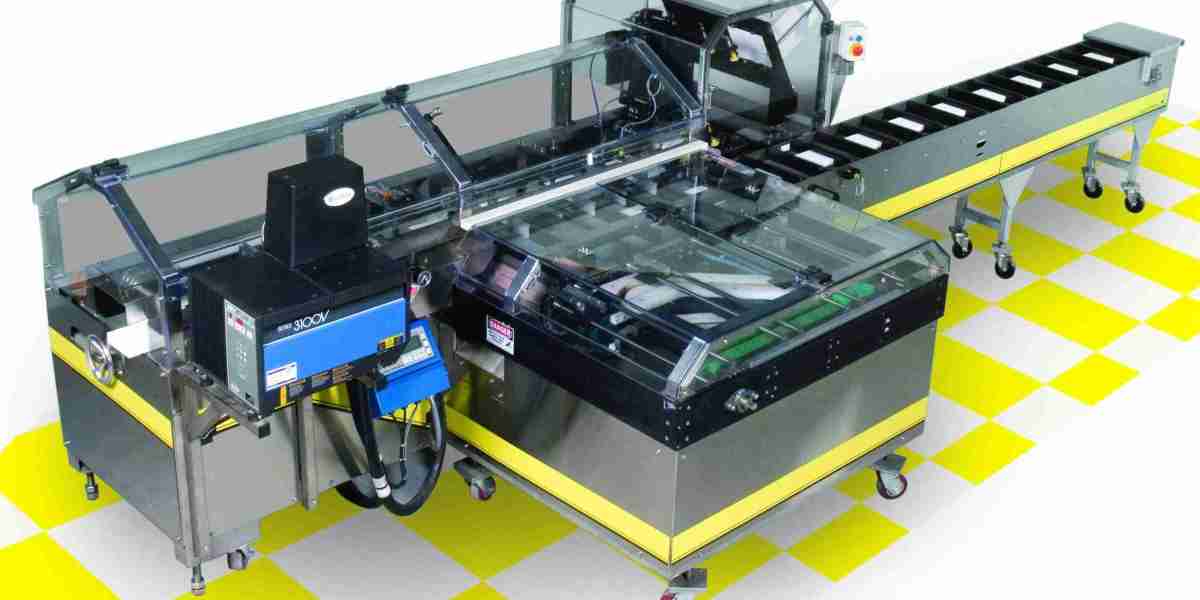The integration of robotics and Internet of Things (IoT) technologies is revolutionizing the Wrap Around Cartoners Market. As packaging operations transition into the era of Industry 4.0, cartoning systems are no longer standalone mechanical devices but connected, intelligent, and adaptable assets within broader smart manufacturing ecosystems. These technological advancements are unlocking new capabilities in precision, flexibility, and real-time responsiveness, creating highly efficient and traceable packaging environments across food, beverage, pharmaceutical, and consumer goods sectors.
Robotic Integration Elevates Packaging Precision
Robotic technologies have become a central feature in next-generation wrap around cartoning systems. Robots are used in various stages of the packaging process—feeding products, grouping units, transferring items, or even palletizing finished cartons. These applications eliminate bottlenecks caused by inconsistent product flow or manual handling limitations.
For instance, delta or SCARA robots equipped with advanced vision systems can accurately pick randomly oriented products from conveyors and align them for cartoning at high speeds. This precision reduces product damage, ensures consistent carton loading, and supports the growing industry demand for SKU versatility.
Robots also allow for dynamic infeed control, meaning cartoners can handle mixed product batches without needing dedicated lanes or manual sorting. This has proved particularly beneficial for e-commerce and custom bundle packaging.
IoT-Enabled Wrap Around Cartoners for Smart Manufacturing
The IoT transformation is enabling wrap around cartoners to connect seamlessly with upstream and downstream systems, creating an integrated data-driven packaging flow. Sensors embedded throughout the machine collect performance data in real-time—monitoring temperature, vibration, speed, pressure, and machine health parameters.
These smart systems transmit operational insights to manufacturing execution systems (MES) or cloud dashboards, allowing operators and plant managers to make faster, more informed decisions. This connectivity enables remote performance monitoring, efficient resource allocation, and even proactive troubleshooting from global service teams.
IoT features also support advanced diagnostics and root cause analysis, reducing downtime and extending equipment life. By continuously learning from data patterns, cartoning systems can self-optimize and adapt to changes in production flow.
Real-Time Traceability and Compliance
In highly regulated industries like food and pharmaceuticals, traceability and compliance are critical. Robotic and IoT-enabled wrap around cartoners provide real-time tracking of every product and carton that moves through the packaging process.
Integration with serialization and coding systems ensures that each package receives unique identifiers, barcodes, or QR codes—supporting end-to-end traceability. This is essential for meeting global regulatory mandates and enhancing consumer transparency. In case of recalls or audits, manufacturers can easily trace back each product to its source and packaging date.
Some cartoners also include vision inspection systems to validate print quality, verify label placement, and confirm sealing integrity, all while automatically logging quality data into central compliance reports.
Enhanced Changeovers and Flexibility
Robotic-assisted changeovers are reducing transition time between product runs. Instead of manually adjusting guides, loading new carton blanks, or repositioning infeed systems, operators can now initiate changeovers through a single touchscreen interface.
Servo-driven robotics adjust settings automatically based on saved product “recipes.” This flexibility supports multi-SKU environments, where rapid changeovers are essential to maintain throughput without sacrificing quality. For manufacturers that supply retailers with frequently rotating products or promotional bundles, robotic automation adds speed and adaptability to the process.
Predictive Maintenance Through Smart Monitoring
IoT-equipped wrap around cartoners track component performance and provide early warnings for potential failures. By analyzing vibration trends, motor heat levels, and cycle counts, the system can alert technicians to service needs before breakdowns occur.
This predictive maintenance approach significantly reduces unplanned downtime and extends machine lifespan. Manufacturers benefit from higher equipment availability and lower long-term maintenance costs, strengthening the overall return on investment.
Some systems also offer digital twin capabilities—virtual simulations of the physical cartoner—which can model performance under different operating conditions and guide service decisions without halting real-world production.
Collaborative Robotics (Cobots) in Cartoning
Emerging wrap around cartoning solutions are also exploring the use of collaborative robots, or cobots, which work safely alongside human operators. These cobots assist with loading tasks, monitoring quality, or handling components too complex for traditional automation.
Cobots are space-efficient, easily redeployable, and ideal for smaller facilities where full automation may not be feasible. Their integration into cartoning lines creates semi-automated systems that combine the consistency of machines with the flexibility of human input.
Case Examples Illustrating Smart Integration
A European dairy company integrated robotic infeed units into their wrap around cartoners and increased line speed by 28%, while maintaining zero carton rejects over a full production quarter. In another case, a personal care brand used IoT-enabled cartoners to monitor real-time line performance across four factories remotely—reducing energy usage by 15% and boosting OEE metrics company-wide.
These examples illustrate how the fusion of robotics and IoT is no longer experimental—it is delivering tangible results and becoming a standard expectation in high-performing packaging operations.
Conclusion:
With robotics and IoT integration transforming cartoning into an intelligent and responsive process, the Wrap Around Cartoners Market is rapidly evolving. Up next, we’ll explore how advancements in servo-driven technologies are unlocking the market’s future potential, further enhancing performance, precision, and customization.




